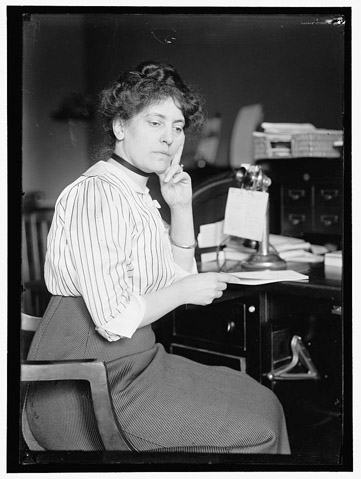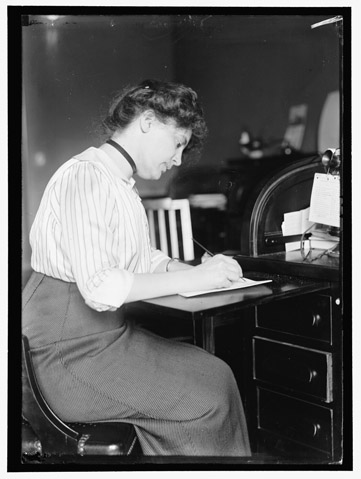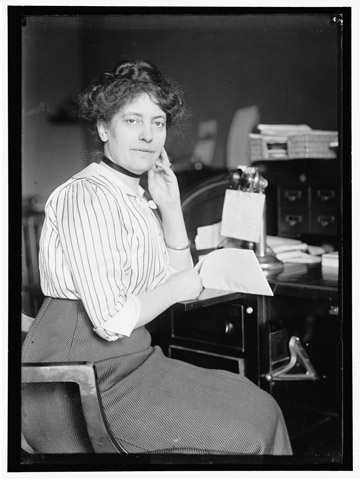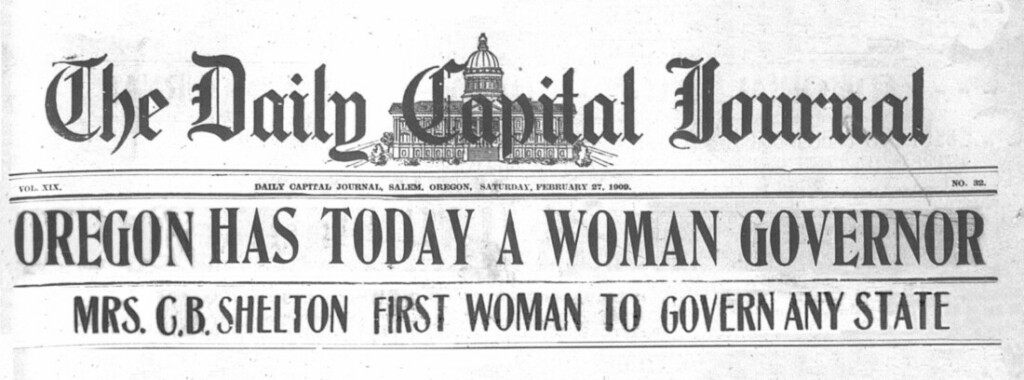
Capital Journal February 27, 1909 page 1. (altered to fit page)
Caralyn B. Shelton: The Nation’s First Female Governor
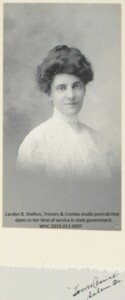
WHC Collections 2019.013.0007
Digital exhibit documenting the life of Caralyn B. Shelton
Recognized as the first female acting governor in the United States, Caralyn B. Shelton served as Oregon’s Governor during the transition between the terms of George E. Chamberlain and Frank W. Benson in 1909 – 3 years before Oregon women were granted the right to vote!
In her three-day tenure as acting Oregon Governor, Caralyn B. Shelton demonstrated that a woman could execute the duties of the highest state office. Her story was told by newspapers all over the world at the time, but few today know her name and her remarkable story.

This exhibit was developed by the Willamette Heritage Center with funding from the Oregon State Capitol Foundation. Researched by Kaylyn F. Mabey. Generous assistance from Anne Mitchell.
Audio Version of Exhibit
Just a Stenographer: In a Man’s word
After a disastrous marriage, Caralyn B. Shelton re-entered the workforce to support herself in one of the few jobs open to women at the time: stenography.
She quickly proved her mettle working at the law firm of an up-and-coming lawyer George E. Chamberlain, and continued in his employ through his appointments as District Attorney, Attorney General and eventually Governor.
At a time when women didn’t even have the right to vote, Chamberlain helped Shelton push boundaries by appointing her as the first woman notary in the state in 1895 and promoting her to become the first woman to serve as private secretary to a governor in Oregon in 1909.
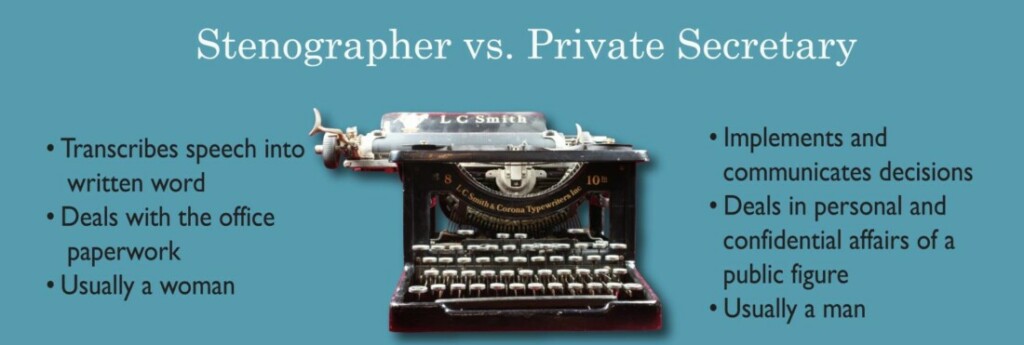
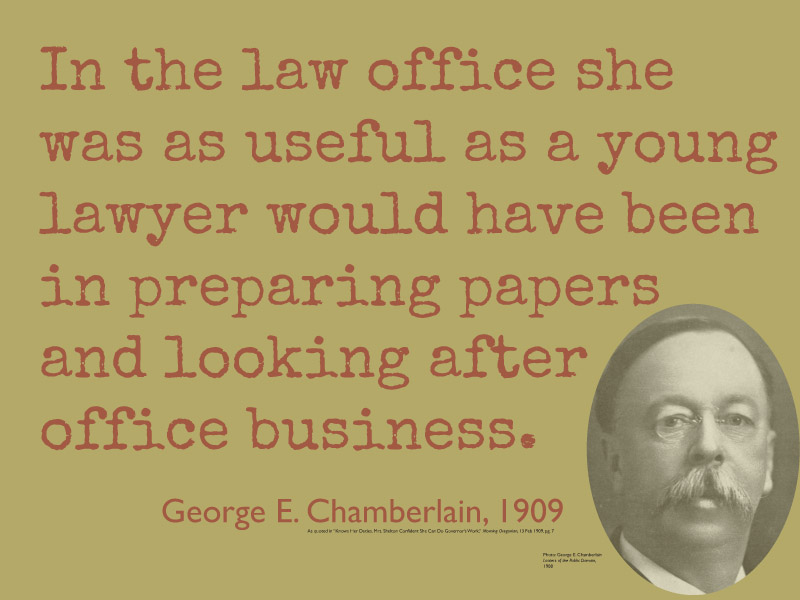
Three Fateful Days
On January 19, 1909, Oregon Governor George E. Chamberlain was elected to the United States Senate. After a contentious election and threat of challenges, Chamberlain did not intend to relinquish the office of governor until he was officially sworn in as senator in early March.
Shortly after the election, Chamberlain sent his private secretary Robert Caples ahead of him to make preparations in Washington D.C., appointing his stenographer Caralyn B. Shelton as his new private secretary in Oregon.
In the days before commercial air travel, the trip to Washington D.C. required a multi-day, cross-country train journey. Conscientious of timing, Chamberlain left Shelton with his letter of resignation and the responsibilities of acting governor for three fateful days.
When asked about the responsibilities by the Morning Oregonian Shelton responded:
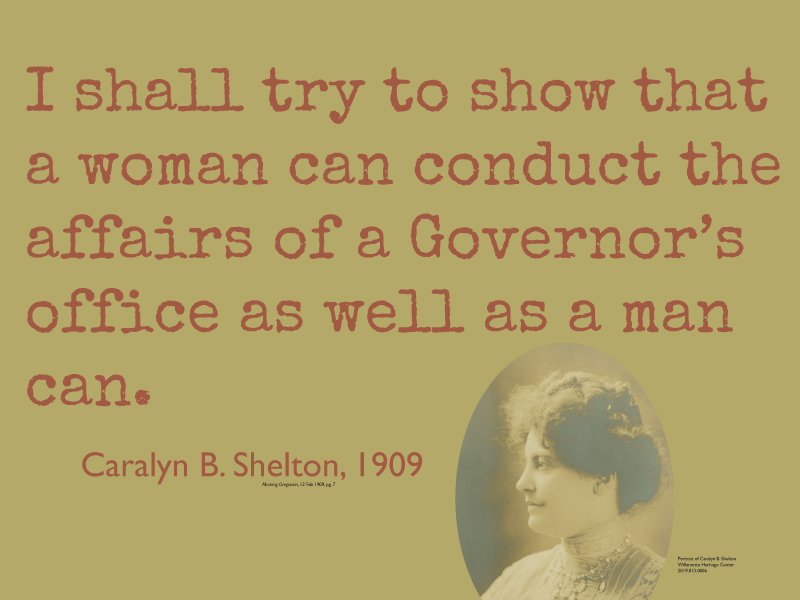
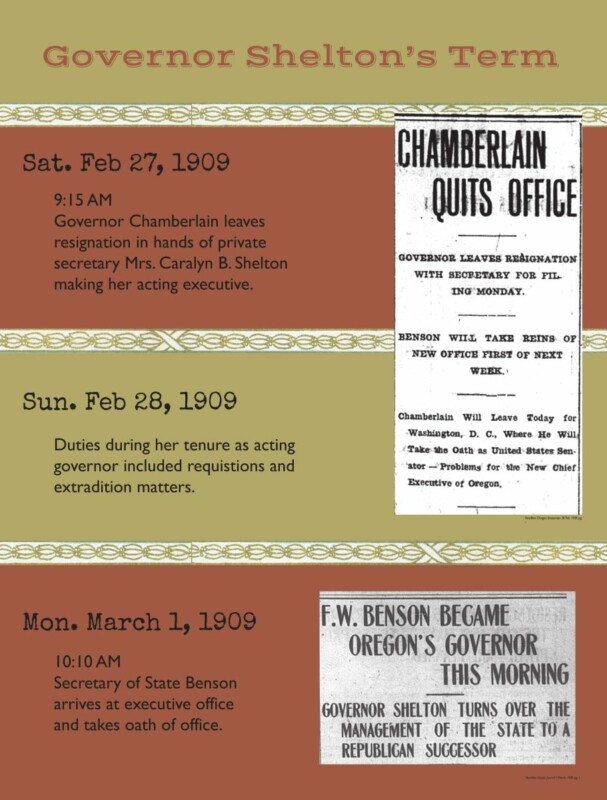
On to Washington
After her short term as acting governor, Caralyn B. Shelton headed east to Washington, D.C. where she resumed her role as private secretary, now to U.S. Senator Chamberlain.
She also held positions of clerk for several U.S. Senate Committees, including:
- Public Lands
- Military Affairs
- Expenditures in the War Department
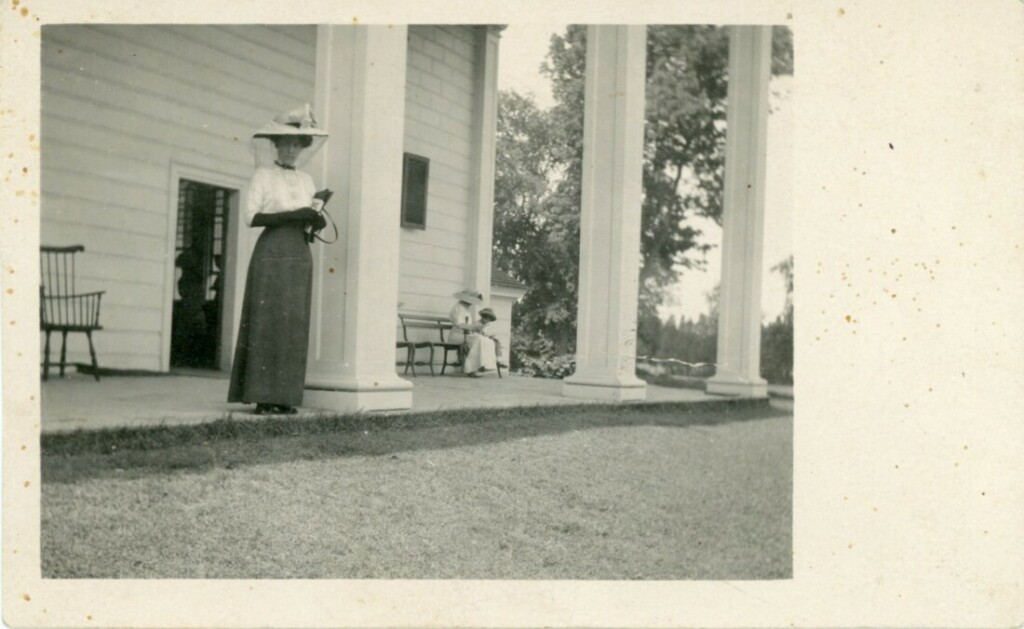
Caralyn B. Shelton at Mt. Vernon. Willamette Heritage Center Collections 2019.013.0081
Caralyn B. Shelton, 1914. Harris & Ewing Collection, Library of Congress. LC-H261-3700. See Collection Here (note name misspelled Miss Carolyn B. Sheldon)
Marriage of Convenience
In February 1926, Senator Chamberlain suffered a paralytic stroke that left him unable to use his legs. Meeting with some of Chamberlain’s family, Caralyn agreed to continue her duties as private secretary and add the duties of caretaker with three stipulations:
- Marriage be in name only
- Continued financial support
- Burial in Arlington National Cemetery
The couple attempted to be quietly married in Norfolk Virginia, but the story broke on their honeymoon trip and quickly gained traction across the country. The marriage arrangement caused a great rift in the Chamberlain family.
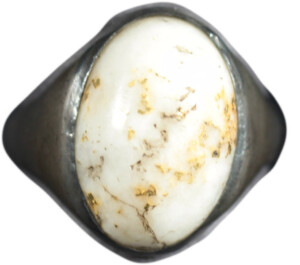
George Chamberlain’s Wedding Ring. Willamette Heritage Center’s Collections 2019.013.0066
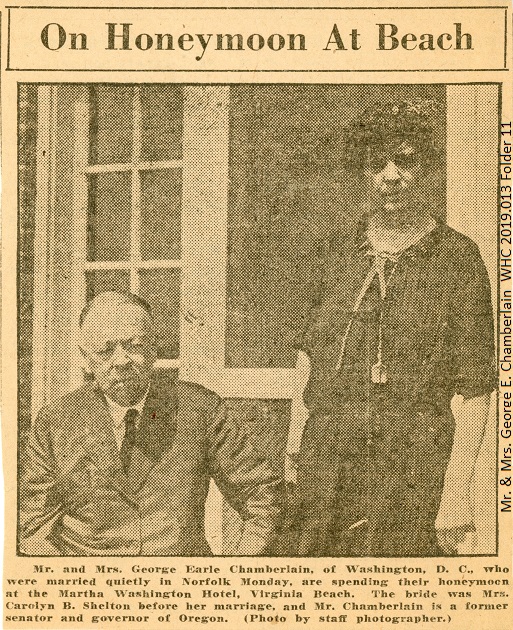
Newsclipping of newlywed Chamberlains, The Virginia Pilot, 14 July 1926, p. 14. WHC 2019.013 Folder 11
Overcoming Circumstances
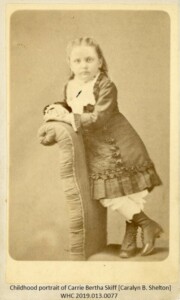
Childhood portrait of Carrie Bertha Skiff [Caralyn B. Shelton] WHC 2019.013.0077
Caralyn “Carrie” Bertha Skiff was born on October 3, 1876, in Union, Oregon. She was one of nine children born to Willis Smith and Mary Calista (née Moe) Skiff. Tragedy struck Carrie young. When she was just nine years old, her father disappeared under mysterious circumstances. Her mother died just a few years later. Carrie and two siblings lived with their older brother Orrin and his wife for a time until the court appointed guardianship of the girls to John W. and Delilah Shelton. Shelton was a wealthy attorney and businessman. He had overseen some of the investigation into Carrie’s father’s disappearance and suspected murder. He was also a powerfully connected political figure.
On October 27, 1892, sixteen-year-old Carrie Skiff crossed the border into Idaho to marry her guardian, John W. Shelton, who was over 30 years her senior. A month earlier, John had filed for divorce while his wife and Carrie’s sister Mabel were on a trip to California. Two years after John died in Portland, the divorce was overturned by the courts and the second marriage annulled – leaving Carrie not even a widow before her 18th birthday with no home and no means of support.

The Oregon Way
How did a woman become acting governor before women could even vote?
Oregon is one of only a handful of States that does not have a lieutenant governor. The next in line should the governor be unable to fulfill their duties is the secretary of state. In practice, the governor’s staff was commonly left in charge for short absences.
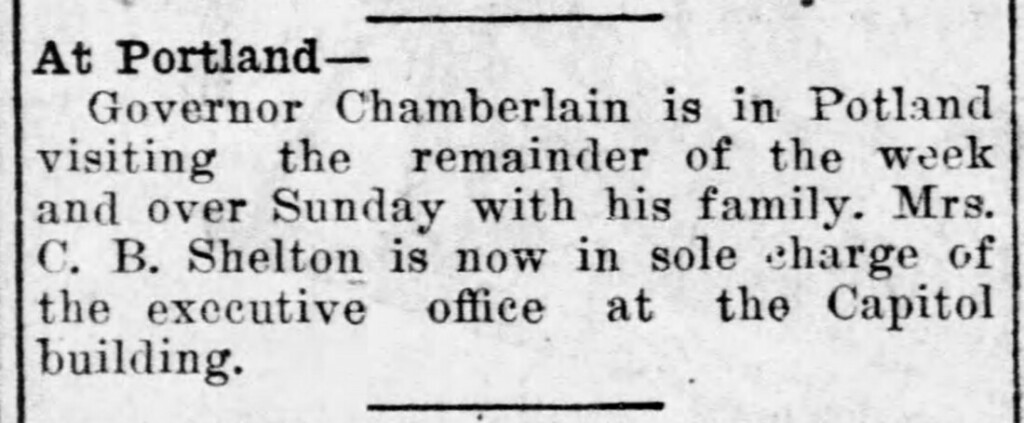
Early documentation of Caralyn Shelton standing in for Governor Chamberlain several years before her three days in the national spotlight. Oregon Statesman 6 Aug 1904 page 4
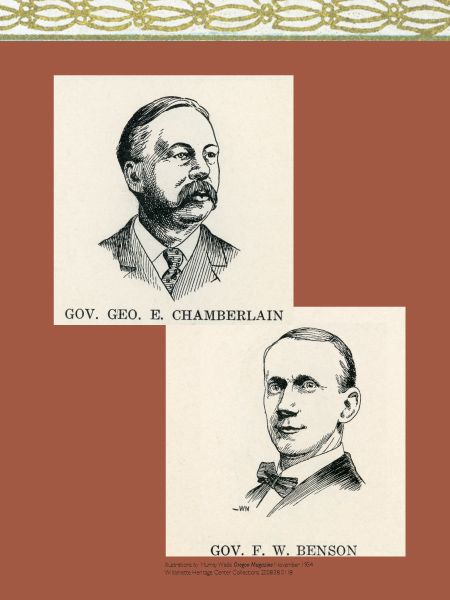
Illustrations by Murray Wade. Oregon Magazine November 1934. WHC Collections 2008.038.0118
Political Posturing
Governor Chamberlain, a Democrat, won the popular vote in the primary, the first time a candidate was selected from the non-governing party in the relatively new Direct Primary System. However, the Republican-led Oregon Legislature was still responsible for the official election. Tensions were high and many maneuvers were suggested by Republicans in a bid to maintain power including not showing up to vote and demanding Chamberlain promise to resign upon election, allowing Secretary of State Frank W. Benson, a Republican, to become governor. Benson was ill, and many Republicans feared that he would die before Chamberlain resigned, allowing him to appoint a Democrat to the office. Despite the machinations, Benson survived and Chamberlain eventually resigned, but on his own terms and leaving his resignation letter with Caralyn B. Shelton.
Suffrage Statement
Shelton’s time as acting Governor came on the heels of a 1908 defeat to a women’s suffrage measure in Oregon – a cause that Governor Chamberlain strongly supported. It was the fourth time the issue had been brought to Oregon’s male voters and the fourth defeat. The deliberate plan to leave Shelton as acting governor and the media that surrounded the event made a strong, practical statement of support for women’s expanded role in Oregon’s government.
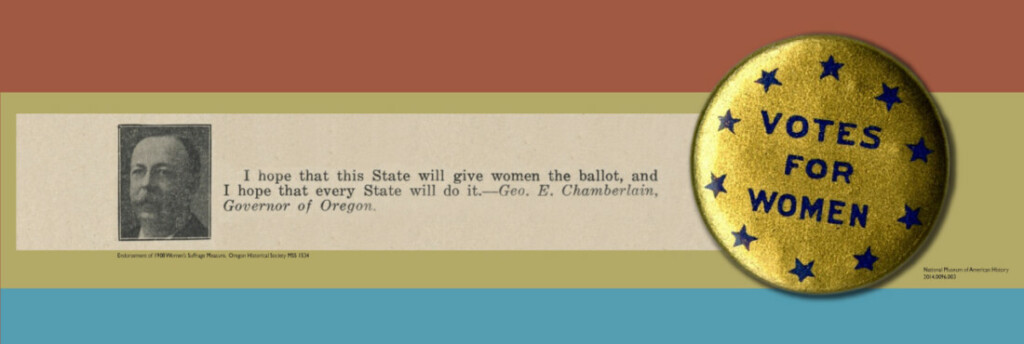
Governor Chamberlain’s Endorsement of failed 1908 Suffrage Measure (Oregon Historical Society MSS1534). Votes for Women pin (National Museum of American History 2014.0096.003)
A Celebrity Example
Once in Washington D.C., Shelton found that she had become a celebrity among women and was sought after by the press, government officials, and women’s organizations – particularly those promoting women’s suffrage. When the Woman Suffrage Procession took place in 1913, she marched with them through the city to the U.S. Capitol Building and the very senate offices that she worked in daily.
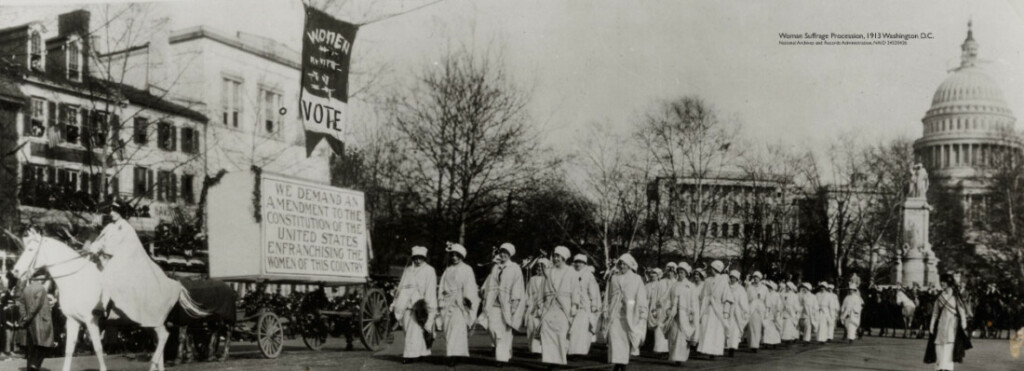
Woman Suffrage Procession, 1913, Washington D.C. National Archives and Records Administration, NAID 24520426
Woman Who Was Governor At Capitol
When the women marched to the Capitol on April 7 to present their petition for suffrage in the senate building, there was one among them who enjoyed the unique distinction of having been both governor of a state and commonwealth…Although the state of of Oregon but recently adopted “votes for women” yet one of the gentler sex has already acted as its chief executive.. When Governor Chamberlain was selected by the people of Oregon as United States Senator, he came on to Washington to take the oath of office. There was no lieutenant-governor, and in the meantime the governor’s secretary took the reins and became acting governor. In this case the secretary to the governor happened to be Mrs. C.B. Shelton, and thus it was that a lady was absolutely and officially the ruling head of the state…Mrs. Shelton is now clerk of the committee on public lands of the United State senate, one of the best positions in the public service. During the inauguration, when women visitors from home called at her office, they addressed Mrs. Shelton formally as “Governor,” insisting that she once held the office she should properly be addressed by that title. It was remarked, however, that no one made the error of referring to her as “governess.”
Miami News 8 Aug 1913 pg 5
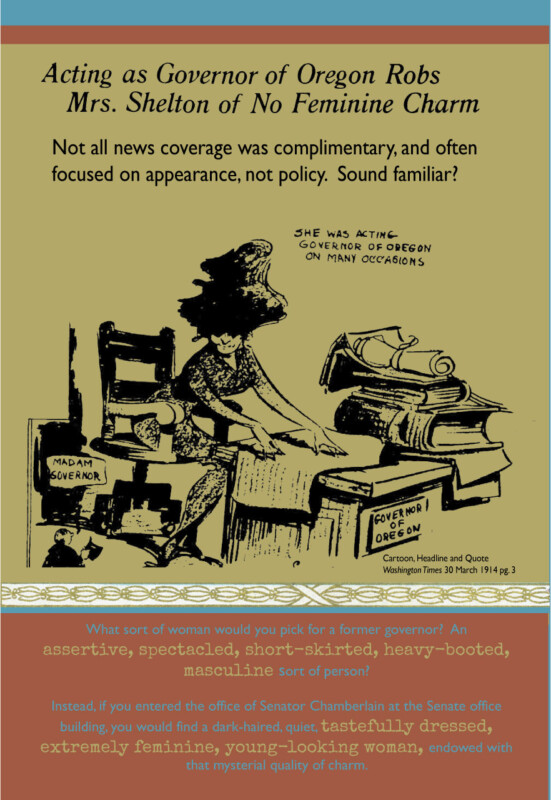

Paving the Way
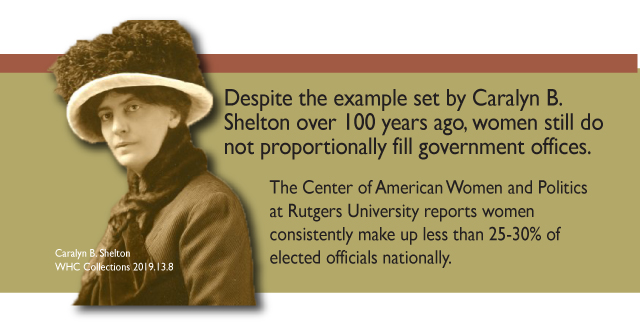
Do you know when the political milestones for women in Oregon politics occurred (listed below)?
Do you think they happened before or after Governor Shelton’s term in 1909?
Harriette Woodruff elected Umatilla County Schools Superintendent
1892
Women gain the right to vote in Oregon
1912
Marian B. Towne elected by Jackson County to Oregon State House of Representatives
1920
Women gain the right to vote nationally
1920
Nan Wood Honeyman becomes first woman to represent Oregon in U.S. Congress
1937
Maurine Neuberger becomes Oregon's first female U.S. Senator from Oregon
1960
Barbara Roberts first woman elected Governor of Oregon
1990
First gubernatorial election to feature all women (major party) candidates in Oregon?
2022
The 2022 Oregon gubernatorial election featured candidates:Democrat: Tina Kotek
Republican: Christine Drazan
Independent: Betsy Johnson
Equal representation in Oregon Legislature
???
Hasn’t happened yet. As of 2024 the breakdown in Oregon’s 90-person legislature is 58% male and 41% female. The gap is definitely lessening, but there is still a ways to go.



